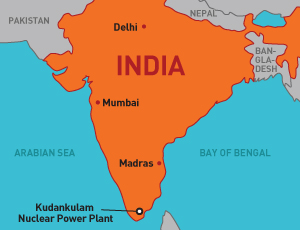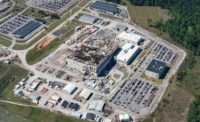
Commissioning of the 1,000-MW first reactor of the Kudankulam nuclear powerplant in India has ground to a halt due to protests by the local population. Originally scheduled for December, commissioning and start up of the estimated $3-billion plant in the southern state of Tamil Nadu was moved to March 2012 because protestor blockades have prevented engineers from gaining entry into the plant.
Stricken with delays since it was first conceived in November 2008, the plant has been the target of safety concerns among the local population following the recent nuclear accident at Fukushima, Japan.
"We are conducting test runs for all operations and have found the operation satisfactory,” says plant Director Kasinath Balaji. "The site is in the process of testing all its operations, including [testing] four diesel generators, assembling the reactor with dummy fuel [and] conducting hydro test of the primary and secondary systems."
Plant officials hope the protestors, which once numbered in the thousands, will disperse by the new commissioning date. The plant is being built jointly by India's Nuclear Power Corp. and Russia's Atomenergoproekt. It uses advanced passive-cooling and heat-removal systems designed to flood the core and suffuse the reactor with boron to shut it down in case of an accident.
In a recent editorial, Raja Ramanna Fellow K.S. Parthasarathy, with India’s Dept. of Atomic Energy, wrote, “The Atomic Energy Regulatory Board [has] satisfied itself that the plant is of proven design. Indian specialists visited Russia and had significant exchange of information from nuclear-powerplant designers. Indian engineers had completed [the] licensing training process [at] either the Balakova nuclear powerplant or Kalinin NPP."
Parthasarathy says the plant is located in the lowest seismic hazard zone in the country. "The water level at the site following the 2004 tsunami, triggered by a 9.2 [magnitude] earthquake, was 2.2 meters above mean sea level. The safety-related buildings are located at higher elevation [9.3 m] and belong to the highest seismic category. [They] are closed with double-sealed, water- leak-tight doors."


Post a comment to this article
Report Abusive Comment